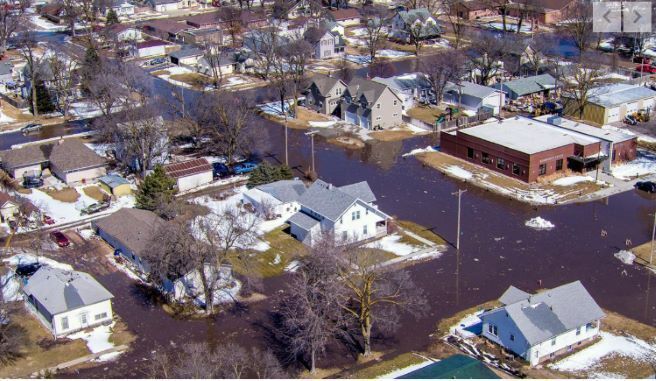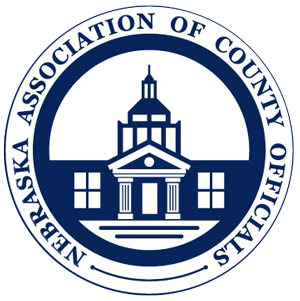
Jon Rosenlund – Grand Island-Hall County Emergency Manager
1. What are some of the key elements involved in preparing a county or region for emergencies or disasters?
o Building great relationships between the various agencies and jurisdictions in order to establish, maintain, or revive planning discussions.
o Assessing current capabilities and needs and then working on ways to fill the gaps.
o Educating the public and our partners on the importance of building our individual and organizational resiliency.
2. How might emergency management look different in your area compared to elsewhere in the state?
o For us, in Grand Island/Hall County, we are fortunate to have a great history of partnership between the City and County, and we have a number of resources in Grand Island that may not exist in other areas.
3. How do you work with other local agencies to coordinate emergency preparedness?
o Through a wide variety of planning efforts, committees, and shared projects. This includes things like the Local Emergency Planning Committee, Regional Planning, Exercise and Training (PET) with other counties, health and medical through the health care coalitions, and community organizations active in a disaster.
4. What are some proactive measures your office takes to reduce risk before a disaster strikes?
o We have a history of great flood mitigation projects in Hall County that have provided a lot of protection, particularly for the City of Grand Island. That includes the Wood River Diversion project and the Prairie/Moore/Silver detention cells.
o We also partner with many jurisdictions on a regional hazard mitigation plan effort, and that allows our local agencies to identify projects.
o We have used hazard mitigation grants to improve our warning systems over the years to great success.
5. What does a successful response look like when emergencies do happen?
o Every emergency already has you “behind the 8-ball” in that there is likely already a series of very tragic circumstances that have occurred, and more are likely to occur before we can get our arms around the situation.
o Good response will be evident through great on-scene leadership using the Incident Command System and great behind-the-scenes support and information exchange in the Emergency Operations Center that is staffed with representatives from the various agencies involved in the response.
o Elected and appointed leaders will be well aware of the situation, prepared to make executive decisions as needed, and prepared to communicate with the public.
o Agencies will also have a great public information model that allows you to communicate with the public on issues such as instructions, warnings, and informative updates.
6. What are some common misconceptions the public has about emergency management?
o That one person can coordinate by themselves in an EOC. An EOC really needs to be staffed with agency reps, or the EM is spending all their time making calls to move information from one partner to another who isn’t in the room. That is where things can break down and information is lost, late, or inaccurate.
o That there isn’t enough to accomplish to justify the expense. Similar to your 911 centers, the EM is a vital part of the background support during an event. But, prior to large incidents, the EM needs to update plans, information, and protocols. There are mitigation and prevention efforts to coordinate. We need to educate the public to help everyone be more resilient. We need to train and exercise our partners regularly. We need to test emergency systems often as well. And we need to get the “players” on “stage” often because they need to have previous experiences with each other before we all “perform” our disaster symphony together.
7. How can residents better prepare themselves and support emergency efforts in their communities?
o Have a plan for home and work.
o Practice that plan to make sure it will really be successful.
o Make a kit with emergency supplies.
o Learn how to receive emergency warning information through multiple resources
o Build some skills that you can use in an emergency.
o Learn about your neighbors so you can help them in an emergency.
8. Are there any community outreach programs or initiatives you’re particularly proud of?
o Our Community Emergency Response Team (CERT) is a collection of volunteers who have received simple yet valuable training to help in a disaster, and they have helped us during the 2019 floods, COVID, Wood River’s house explosion, and many more incidents. They have won awards from the State of Nebraska for their hard work.
9. What innovations or changes are you hoping to implement in the next few years?
o We are working on a large and comprehensive upgrade to our radio communications system that will provide us with state-of-the-art radio technology and interoperability.
o We are exploring the use of AI in emergency services and ways to improve our EOC operations.
o We are looking at ways to improve our emergency warning system.
o We hope to improve our interface between Incident Commanders in the field with our EOC staff.
10. Can you share a story about a specific emergency that you helped prepare for and respond to?
o For years, we have worked on a series of projects that you don’t always have to use all of the time, but when you need them, you REALLY need them. Those included our CERT volunteers, our Damage Assessment tool (Orion), and our COAD (communities organizations active in disasters) committee. The CERT volunteers are training in a wide variety of emergency tasks, including helping with public health emergencies, sandbagging, damage assessment, traffic control, Multi-Agency Resources Centers, and more. The Damage Assessment Tool was used for smaller incidents with damage to a handful of structures, but it is capable of much, much more. The COAD was a group of partners in our community who exchanged information on what resources they could bring to bear in an emergency, and we practiced our Multi-Agency Resource Center (MARC), which allows us to host those agencies in one place and make contact with many disaster survivors at once.
o We need all of these for the 2019 floods and again for COVID and the immunization clinics. In the span of just a few years, we utilized the plans, training, exercises, and drills that we never thought would actually come to pass. The volunteers, the damage assessment software tool, the exercises, drills, and planning all came together for those events that happened one right after another. It was like we planted seeds and tended them for years, never knowing if they would bear fruit, until they did, and did so in amazing ways!
